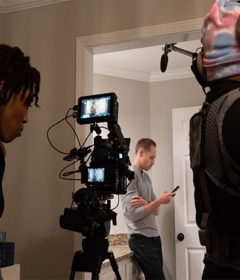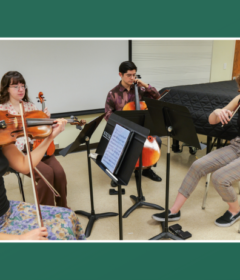Northern Cheyenne artist Jordan Ann Craig presents virtual talk today, Feb. 22, at 3 p.m.
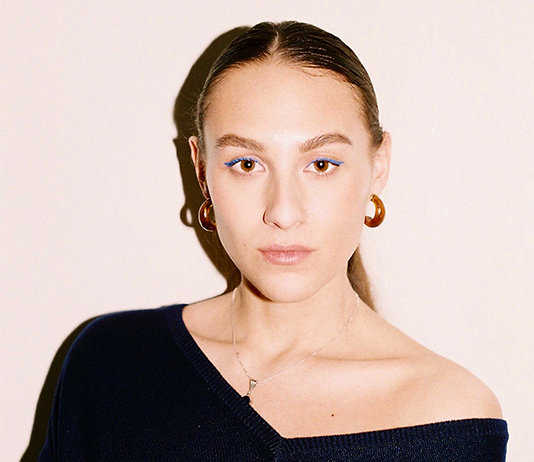
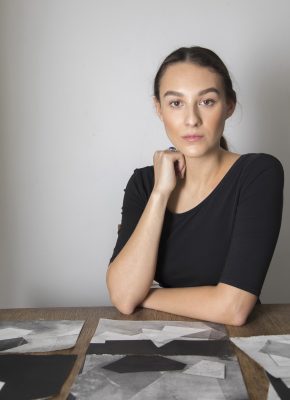
Photo/Laura Shill
Jordan Ann Craig, a Northern Cheyenne artist born and raised in the San Francisco Bay Area, says her painting, prints, collages and textile prints “celebrate Indigenous design and Indigenous people — our history, our present and our future. It’s important that Indigenous voices are heard in art.”
Craig’s voice will be heard when she presents a virtual talk at 3 p.m. Monday Feb. 22 as part of the Dr. Charles White Speaker Series. The series, which debuted in January, was created by the Creative Arts Department Anti-Racism Committee for Equity, whose mission is “to advance equity for and inclusion of historically underrepresented ethnicities and races” in the creative arts at Stetson.
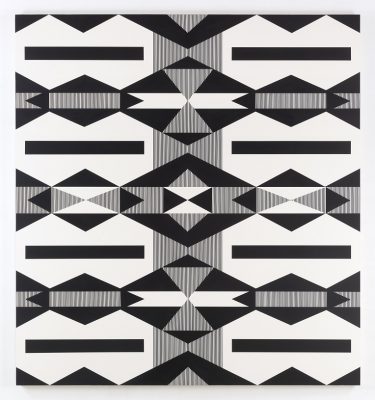
Craig’s talk is co-sponsored by the Stetson Organization for Native American Revitalization (SONAR). Cultural Credit will be available.
Please complete the pre-registration form at least one hour before the start of the talk. If you do not have a Stetson email address and would like to participate, please email [email protected] by 2 p.m. on the day of the event to be added to the list to receive the Zoom link. Talks will be digitally archived and viewable on Vimeo.
The 28-year-old Craig, who graduated in 2015 from Dartmouth College with a double major in studio art and psychology, says her geometric-infused art is “a combination between expressing design and abstraction.” She confesses her work is “ambiguous” and can be “read through many different lenses” outside of her Native heritage. Craig has been an artist-in-residence in Ireland, Amsterdam and London as well as U.S. cities, and her first solo show will open in London this year.
In the following interview, conducted by phone from her 1927 adobe home in the Pojoaque Valley in northern New Mexico, Craig talks about being “ambiguous” herself, and her responsibility to uplift her Native heritage through her art.
Question: When and how were you inspired to take up art?
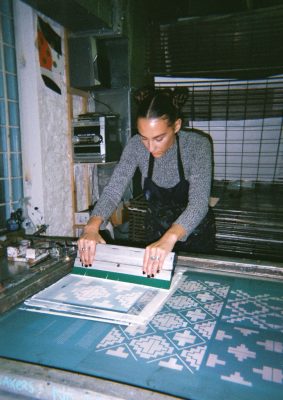
Craig: I would say I’ve always been doing art. I asked my mom that question the other day: When did I become an artist? When did I start showing artistic talent? She said probably before I was even 2. I grew up in a very art-supportive family. My mom always invested in art supplies for me and my two younger sisters. I was really shy growing up so I took to doing art because that was a nice, quiet exercise.
Q: Do you feel a responsibility to uplift your Native heritage through your art?
Craig: I definitely do, and I would say a lot of my Indigenous peers feel the need to be positive leaders, role models, doing something for your community. Giving back is huge. Being that my art is spreading and being placed throughout the nation and the world, I feel like there is a responsibility as a Northern Cheyenne woman to uplift my community and my family.
My father is of Eastern European dissent, my mother is Native American — Northern Cheyenne and Zuni. My mother was adopted from outside of the tribe, and I grew up in the Bay Area. So there’s this coming back to my culture and learning about it through other people: friends, peers and family. I have an interesting perspective because I am kind of on the out. I’m navigating my culture through not growing up on the reservation, not growing up with my biological grandparents or my family on that side. We’ve been able to reconnect but it’s definitely an interesting background because my mom grew up with an Irish Catholic mother and a Swedish father and she had a bunch of adopted siblings in her family. So it’s a very big melting pot of different people.
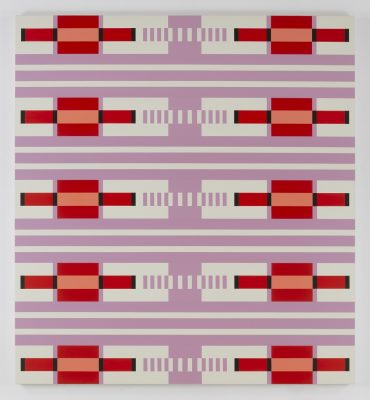
Q: People may view your work and not be aware of any connection to your Native American heritage. They may see your acrylic on canvas work “Stop Flirting With Me” as more akin to the abstract paintings of Dutch artist Piet Mondrian. They may not realize that “New Home,” with its triangles and sharp angles, was inspired by the pottery of the Acoma Pueblo people in New Mexico.
Craig: I like that my work is ambiguous — I myself am ambiguous. I’m used to being the lighter-skinned, brown-haired girl with brown eyes, where my mom has dark black hair and my dad has blondish gray hair.
I’m proud that my work doesn’t have to be in explicitly Native American themes. For people who have seen those motifs and designs and language, it brings up those memories. But somebody from France or Ireland can see my work and experience it in a whole other way. I’m happy my work can be read through so many different lenses.
I also studied psychology in college, and there is something in the human brain that wants to be able to figure things out and categorize things. Someone like me doesn’t fit within one bubble. I frequently get asked what am I or where am I from? Or you look this or that. People want to figure my background out, and sometimes it’s just best for people to not know and to accept the not-knowing. I think ambiguity is something that is an underlying theme in my work.
Upcoming talks in the Dr. Charles White Speaker Series include:
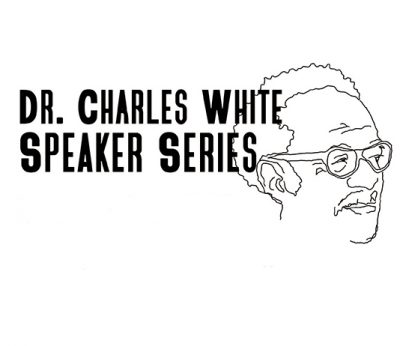
• Feb. 22, at 3 p.m. —Jordan Ann Craig.
• March 9 at 4 p.m.– Ceramic artist Chotsani Elaine Dean, co-sponsored by the Department of Environmental Science and Studies.
• March 15 at 10 a.m. — Painter Biraaj Dodiya, co-sponsored by the Stetson Asian Pacific American Coalition (APAC). Cultural Credit will be available.
• March 31 at 6 p.m. — Women of Color in the Arts, a panel discussion featuring Stacey Derosier (lighting design), Nadia Garzon (acting and directing), Erica Palmiter (performance art and art education) and Winnie Yoe (design and interactive art). Cultural Credit will be available.
• April 19 at 5 p.m. — Recording engineer Nagaris Johnson, Department Chair of Recording Arts at the MediaTech Institute in Dallas.
Please complete the pre-registration form at least one hour before the start of each talk. If you do not have a Stetson email address and would like to participate, please email [email protected] by 2 p.m. on the day of the event to be added to the list to receive the Zoom link. Talks will be digitally archived and viewable on Vimeo.
— Rick de Yampert

